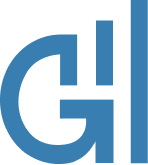Another hit for households
Inflation has surged again, dashing hopes for early rate cuts, even as GDP data shows growth slowing to its weakest pace in decades. Households and businesses face higher costs with little relief in sight.
From easing to acceleration
After several months of encouraging signs, the Consumer Price Index jumped to a 2.8% annual increase to July 2025, up from 1.9% in June – the steepest annual rise since July 2024 and at the top of the RBA’s 2–3% target band. Economists had expected 2.3%, making the print a clear upside surprise.
Michelle Marquardt of the ABS noted that July’s 2.8% CPI was the highest annual inflation rate since July 2024, following several months of easing inflation. Beneath the headline, the picture is more troubling. Underlying inflation rose from 2.5% to 3.2%, while the trimmed mean – the RBA’s preferred measure – moved from 2.1% to 2.7%.
These shifts show inflationary pressures are broadening across the economy, not simply the result of short-term volatility. Markets reacted quickly, with equities trending lower as stronger-than-expected growth data reinforced the view that policy easing will be delayed.
Where the pain is showing up
The biggest culprit was electricity, up 13% in July alone, as households in NSW and the ACT missed rebate payments. Over the year, power bills are 13.1% higher.
Households also faced:
- Housing costs +3.6% (rents +3.9%, new dwellings +0.4%)
- Food and drinks +3%, with eggs +18% and coffee, tea and cocoa +14.4%
- Alcohol and tobacco +6.5%
- Holiday travel +3.3% annually, after a 3.7% fall in June
- Fruit and vegetables +4.8%
Fuel prices fell, and durable household goods remain subdued at 0.9% annually. Cheaper fuel and subdued durables help at the margin, but they do little to offset rising essentials such as energy, rents and food.
Growth struggles to gain traction
The national accounts show that GDP grew 0.6% in Q2, leaving annual growth at just 1.8% – the weakest in three decades outside of the pandemic years. Household spending rose 0.9% – led by discretionary categories such as travel – but this came at the cost of a further decline in the savings rate to 4.2%.
Government spending supported growth (+1.0%), while private investment was flat and public investment fell sharply (-3.9%). Exports (+1.7%) outpaced imports (+1.4%), adding modestly to growth.
Mining output rebounded (+2.3%), but manufacturing (-0.6%) and construction (-0.9%) contracted. Compensation of employees rose 1.1%, reflecting ongoing labour market strength.
Household consumption is still holding up, but the reliance on savings is a red flag. In my experience, once buffers erode, financial stress accelerates quickly. Businesses should note that weak investment and falling profits in sectors like manufacturing point to tougher conditions ahead.
Rate relief on ice
The RBA only just reduced the cash rate to 3.60% in August, easing policy settings. But with inflation accelerating and GDP showing resilience in spending, further cuts are now off the table – at least for September.
The more realistic scenario is a move in November – and even that depends on the labour market softening. If employment holds up and inflation remains sticky, the conversation could shift back towards hikes rather than cuts.
Quarterly matters more than monthly
It’s important to remember the RBA bases its major decisions on quarterly CPI, not just the more timely monthly indicators. As such, the September quarterly print will carry disproportionate weight in determining the path forward.
That said, the combination of inflation surprises and recent strong household spending and GDP growth has put the central bank in a tight spot. While the RBA has long cautioned against overreacting to monthly volatility, there’s increasing pressure: market expectations, broader economic data, and tightening labour market signals make patience more costly, in terms of credibility. Other central banks are facing the same challenge, with sticky core inflation forcing the Fed and ECB to temper easing expectations.
My take
What does this mean in practice? In more than two decades in corporate banking and mortgage advisory, I’ve seen how quickly markets can pivot when inflation surprises on the upside. July’s result is exactly that – a setback at a time when households were hoping for relief.
For borrowers, the message is clear: don’t expect lower repayments anytime soon. With mortgage serviceability ratios already stretched, this latest CPI rise will keep pressure on households. Building buffers where possible remains essential.
For businesses, particularly those exposed to energy costs or consumer demand, this is a signal to reassess cash flow resilience and funding structures. In my experience, lenders become far more cautious in these environments, placing greater scrutiny on assumptions around demand and cost pass-through.
Supermarket results only reinforce this point. Woolworths and Coles have both reported tighter margins and more cautious consumer spending, with shoppers trading down or buying less. That competitive pressure in retail is a clear reflection of how households are adapting to persistent cost-of-living pressures.
With banks now increasing their Household Expenditure Measures to reflect higher living costs, households should take a disciplined approach to reviewing spending and building buffers.
What comes next
The RBA will weigh not just this inflation print, but also:
- Q2 GDP showing weak but positive growth,
- Labour market data on 18 September,
- A second monthly CPI before the 29–30 September meeting.
My base case remains a November cut. But the risk case – if employment data continues to surprise on the upside – is that the RBA leans back towards hikes. For households, that means budgeting for sustained pressure. For businesses, it means stress-testing funding and cash flow strategies.
In my view, the message is simple: households must budget for higher costs, and businesses must build resilience. Inflation has roared back – and it will shape household budgets and business decisions for longer than many had hoped.


